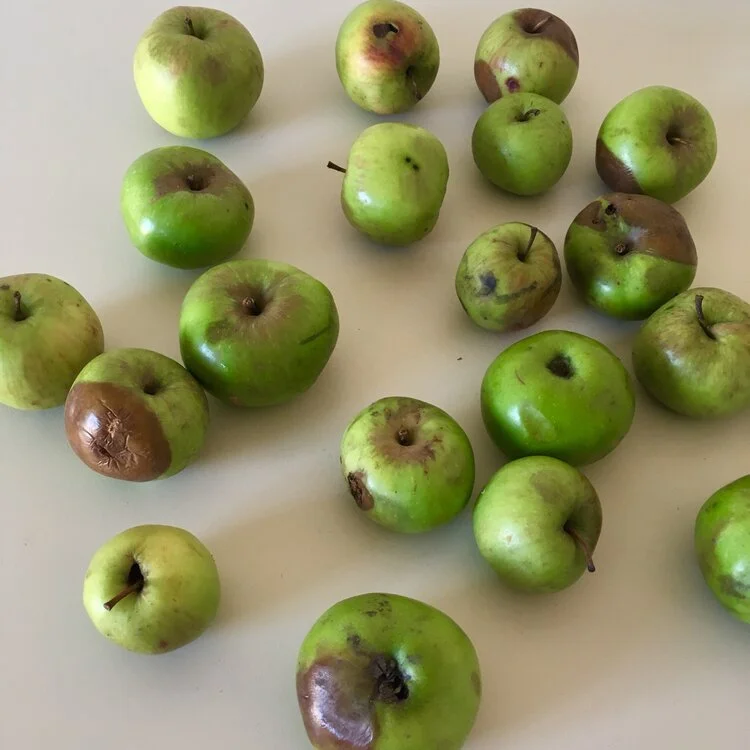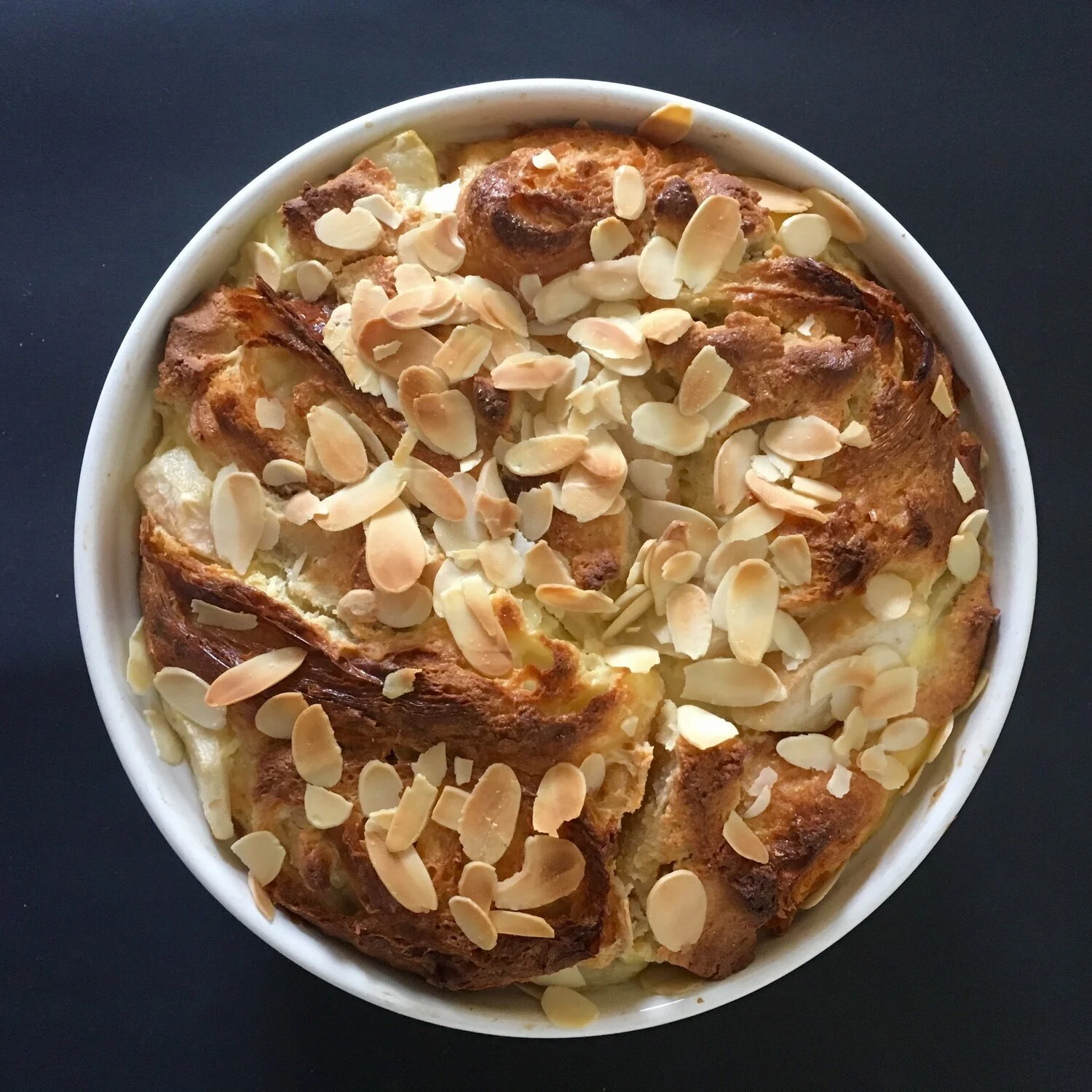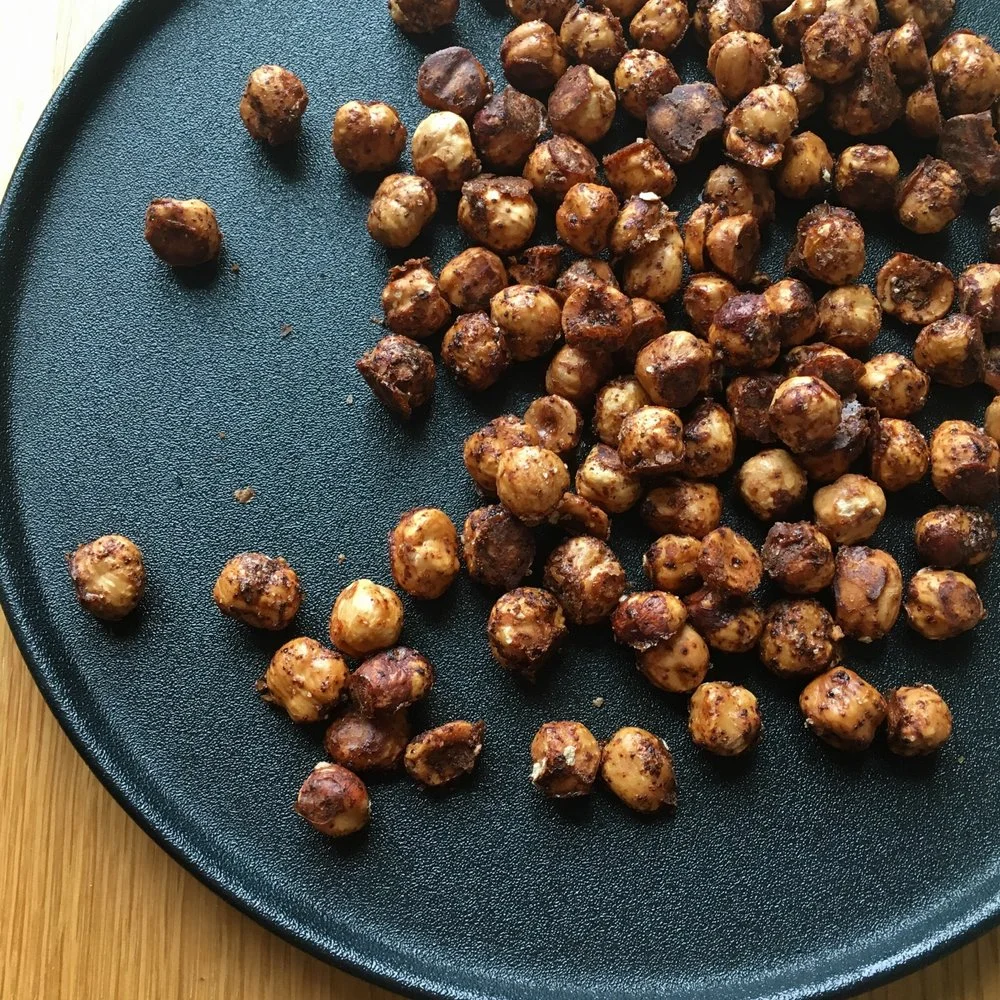Lavender jelly from windfall
Late summer was always a time of high productivity in the kitchen in our family. When we had to utilise copious amounts of produce brought in from our vast allotment. Even these days, during the months of August and September, when I call home, I only get my mum on speaker phone while she is busy filling jars with jam. I suppose many of us have a friend, colleague or neighbour who will occasionally force some produce from their garden upon us. Sheer desperation and overwhelm masked as generosity or even altruism.
The other day the landlady of our office building came around and gave us several kilos of apples picked from her garden. They were the small greenish types that didn't really look good enough to eat. Some of them had bruises and brown spots or had visible wormwholes. None of my colleagues took any when we left for the weekend. By Monday morning there were even more brown spots and we had to discard a few apples already. There didn't seem much time left to eat them. Knowing my colleagues they would just leave the whole bowl to rot and discard the rest. I decided the apples would be perfect for lavender jelly which I haven't made for a long time. It's such an effortless way to use up apples. You simply chop the apples and cook them with core, peel and stem and extract the juice. Therefore it didn't matter that they had brown spots and wormwholes. The rotten bits were cut off and given to compost. I didn't weigh the apples before I cut them, so not sure how much I had to discard. I suppose it was about 500 g. I was left with about 1.5 kg to cook. The recipe I got was from an issue of Food & Travel UK. I am giving ratios here, so it will be easier for you to work it out if you use leftover apples.
You start with 4 parts apples and 3 parts water. For instance if you start with 2 kg of chopped apples (brown bits and wormy parts already discarded) you add 1.5 litres of water. Adjust the lavender in the recipe accordingly by dividing them by 4, multiply that by 3. Does that make sense? I was crap at math, but I figure this out easily. If worse comes to worst, just go to the shop and add an apple to make up the weight. I will give the quantities here that I found in the recipe of Food & Travel UK.
lavender jelly
2 kg cooking apples, washed
3 tbsp dried lavender flowers
a few blackberries or raspberries
raw cane sugar
Chop the apples roughly, don’t bother to peel them or remove the cores or stems. The cores contain a lot of pectine which helps the jelly to set. Put the chopped apples into a large pot with 2 tbsp of the lavender flowers and the blackberries. Add 1.5 litres of water and simmer until the apples are very soft. Strain through a fine sieve over a bowl and let drain over night. Don’t feel tempted to squeeze the last bit of juice from them. Otherwise the jelly will be cloudy.
Measure the resulting liquid and for each 500 ml use 500 g of sugar. Add the measured liquid and sugar into a clean pot and add the remaining 1 tbsp of lavender. Stir over low heat until the sugar is dissolved. Then bring to a rolling boil. If you have a sugar thermometer you can determine the setting point easily. It is 105 degrees C. If you don’t have a thermometer you can also use the chilled saucer method. Simply put a couple of saucers into the freezer for a couple of hours. Test the setting point of the jelly by putting a spoonful of jelly onto the chilled saucer, leave for a minute and run your finger through the jelly (it will have cooled down after a minute!), if it forms a skin it is ready. You can then fill the jelly into sterilized jars (either cleaned with hot soapy water and dried with a fresh towel or in the dishwasher). I like to use a funnel for this to prevent the jelly running down the sides. Close the jars with lids as soon as you have filled them. Mostly they will click after a while, but I have found it is not mandatory. They still keep for a while even if hasn’t clicked. I like to eat this jelly plain on toast, but it is also really nice with goats cheese!






